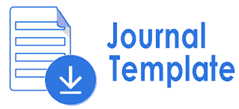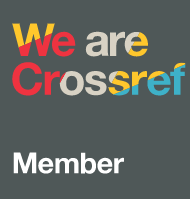A transitivity analysis of the final 2020 presidential debate Donald Trump and Joe Biden
Abstract
This study is aimed to determine the ideological content implied in the debate speeches of Donald Trump and Joe Biden by using the transitivity theory of Halliday. The method used is descriptive qualitative. From the data found, the highest frequency of process types is found in Donald Trump with a total of 63 (100%), while Joe Biden with 32 times (51%). From this study, it can be concluded that the Transitivity analysis that most often occurs in the Donald Trump and Joe Biden debate is the Material Process. This process is the process of doing something. In this case, Donald Trump and Joe Biden took action in dealing with coronavirus cases in America. Donald Trump and Joe Biden's ideological stance is to show that he cares about the coronavirus cases in America. This is done bay both candidates due to show how they have struggled to handle the pandemic very well in order to get sympathy from ten audiences.
Keywords
Full Text:
PDFReferences
Creswell, J, W. (2003). Research Design: Qualitative, Quantitative, and Mixed Method. London: Sage Publications.
Dylgjeri, A. (2017). Analysis of Speech Acts in Political Speech. European Journal of Social Sciences Studies, 2. Doi: 10.5281/zenodo.344518.
Gunawan, B. & Ratmono, B, M. (2018). Threats to The Ideology of Pancasila in The Reform Era: Praxis Case of Regional Development Policy, 9(1), (56- 82). http://dx.doi.org/10.18196/jpg.2018.0057.56-82.
Halliday, M., & Matthiessen, C. (2004). An Introduction to Functional Grammar. London: Oxford University Press.
Isda, I.D. (2019). An Analysis of Speech Function at Traditional Shopping Center in Langsa. Journal of Linguistics, Literature & Language Teaching, 5(1).
Khosiah, Hajrah, & Syafril. (2017). Persepsi Masyarakat Terhadap R encana Pemerintah Membuka Area Pertambangan Emas di Desa Sumi Kecamatan Lambu Kabupaten Bima. Jurnal Ilmu Sosial dan Pendidikan, 1(2).
Klein, W. (1996). Language Acquisition at different ages. Cambridge: Cambridge University Press.
Kuhn, T.S. (1992), The structure of revolutions scientific studies‖, Translation by Beatriz Vianna Boeira and Nelson Boeira.
Heryani, S., Purnama, A., & Hartono. Donald Trump’s Ideology in His Political Speeches: A Critical Discourse Analysis.
Nainggolan, P.P., & Muhamad, S.V. (2020). Pemilihan Presiden Amerika Serikat 2020 dan Implikasinya Bagi Dunia. Info Singkat, 12(21).
Ningsih, Tatik J. and Megah, Suswanto Ismadi (2021).An Analysis of Register of the Football Terms Used in online News of the BOLA Magazine. Journal Cahaya Pendidikan,Vol7 No.1, (2021)
Novrian, Syaputra and Mega, Suswanto Ismadi (2022). A Transitivity Analysis of Putin’s ideological stance in the “Financial Times” Online Newspaper In 2019. Journal Cahaya Pendidikan, Vol.8 No.1 (2022).
Pamungkas, M.E. (2020). Translation Methods in Political Speeches: A Case Study of English Translation of President Joko Widodo’s Inaugural Address. Paradigma Jurnal Kajian Budaya, 10(20), (132-146). Doi: 10.17510/paradigma. v10i2.289.
Rahmah, Sinar, T.S., Mbete, A.M., & Setia. E. (2015). Ideational Meaning of Wedding Ceremony in Deli Malay’s Traditional Culture: A Multimodal Analysis. IOSR Journal of Humanities and Social Science, 20, 22-29.
Renaldo, Z.A. (2021). Presupposition and Ideology: A Critical Discourse Analysis of Joe Biden’s Inaugural Speech. PROJECT (Professional Journal of English Education), 4(3).
Wahyuni, R., Hamzah, H., & Wahyuni, D. (2019). An Analysis of Transitivity System in Memoirs Written by EFL Students. E-Journal of English Language & Literature, 8(1).
Schmitz, P.W. (2005). Should Contractual Clauses That Forbid Renegotiation Always be Enforced? Journal of Law, Economics, and Organization, 2(1), (315- 329).
Simarmata, M.Y., & Sulastri, S. (2018). Pengaruh Keterampilan Berbicara Menggunakan Metode Debat dalam Mata Kuliah Berbicara Dialektik pada Mahasiswa IKIP PGRI Pontianak. Jurnal Pendidikan Bahasa, 7(1).
Sinaga, Margareth F., & Elia M.G. (2013). The Analysis of Process in Selected Speeches of President Susilo Bambang. Lunguistica: Journal of FBS UNIMED, 4(1), 2013.
Siregar, S.R. (2019). The Student’s Ability in Analyzing Metafunction. English Journal for Teaching and Learning, 7(1), (81-94).
Tengku S.S. (2012). Teori dan Analisis Wacana Pendekatan Linguistik Sistemik- Fungsional. Medan: Mitra.
Tesa, J. P., Arham, M. (2021). Analysis of Speech Acts in Susilo Bambang Yudhoyono’s Political Speech. PROJECT (Professional Journal of English Education), 4(1), 2021.
Ulum, M., Sutopo, D., & Warsono. (2018). A Comparison Between Trump’s and Clinton’s Commissive Speech Act in America’s Presidential Campaign Speech. English Education Journal, 8(2), (221-228).
Van Dijk, T. (2006). Ideology and Discourse Analysis. Journal of Political Ideologies, 11(2), (115-140).
Koller, V., & Wodak, R. (2008). Handbook of communication in the public. Mouten: De Gruyten.
Wiratno, M.A. (2018). Pengantar Ringkas Linguistik Sistemik Fungsional. Bandung:Pustaka Pelajar.
Yuliana, Manda, L.M., & Kamsinah. (2018). Transitivity and Ideology in Donald Trump Campaign Speech. Jurnal Ilmu Budaya, 6(1).
Zhang, Y. (2017). Transitivity Analysis of Hillary Clinton’s and Donald Trump’s Firs Television debate. International Journal of Applied Linguistics & English Literature, 6(7), (65-72).
DOI: https://doi.org/10.33373/chypend.v9i1.4585
Refbacks
- There are currently no refbacks.

This work is licensed under a Creative Commons Attribution-NonCommercial-ShareAlike 4.0 International License.
Copyright (c) 2018 Universitas Riau Kepulauan

Ciptaan disebarluaskan di bawah Lisensi Creative Commons Atribusi 4.0 Internasional.















